Medieval cities: to see through the eyes of their contemporaries
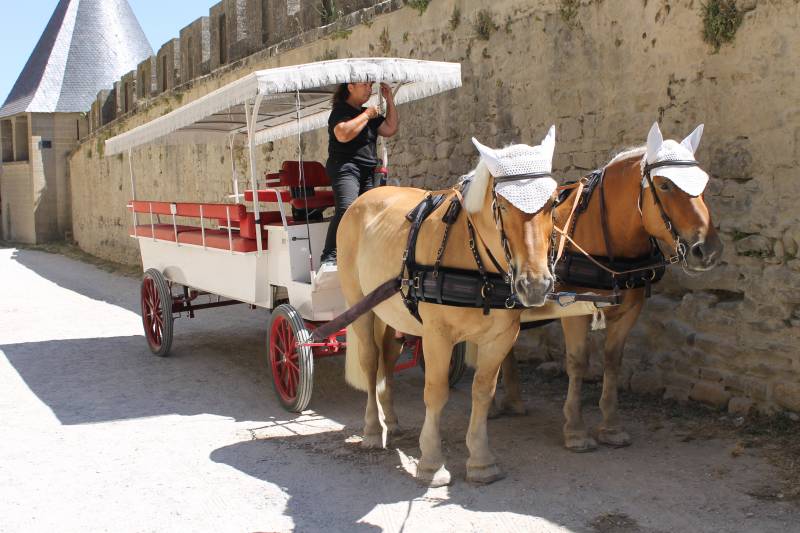
You can drive through a medieval city… if, for example, you come to the fortified city of Carcassonne in France, get into this wagon and drive it along all its winding streets. But we will see it, again, through the eyes of modern man. But how did the people of that time, their, so to speak, contemporaries see the medieval cities? Photo of the author
and preach in it.
Jonah 1:2
stories by stories Middle Ages. On the pages of VO, we have repeatedly discussed interesting examples of medieval literature, the so-called manuscripts, so named because they were written by hand. Then printing was invented, and the first printed books appeared, which were called incunabula.
However, not all printed books of that distant time are considered to be incunabula, but only those that were published in Europe from the moment printing began until January 1, 1501. These editions are very rare, since the circulation of the first printed books was small and amounted to only 100-300 copies. Among the most famous incunabula is the Gutenberg Bible, printed in the early 1450s.
However, the incunabula and incunabula are different. Among them there are more interesting for us, and less. Among the first is the famous "Nuremberg Chronicle" - an incunabula, printed in 1493 and containing a beautifully illustrated chronicle of biblical history, starting from the creation of the world.
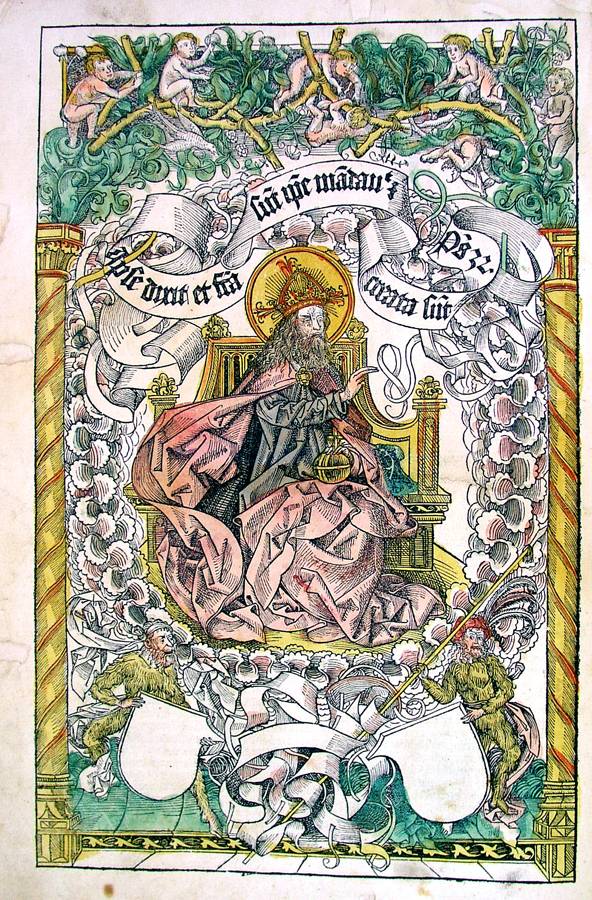
Sheet of the "Nuremberg Chronicle" by Hartmann Schedel with a woodcut depicting the Creator (1493)
It was written in Latin by Hartmann Schedel (1440-1514), and translated into Middle German by Georg Alt, and published by him, and there are editions in Latin and in German, which differ from one another. However, the most unique thing in this work is by no means the text of the work, but as many as 1809 (!) woodcut illustrations directly related to it, and in some of the surviving copies of this chronicle they were even hand-colored!
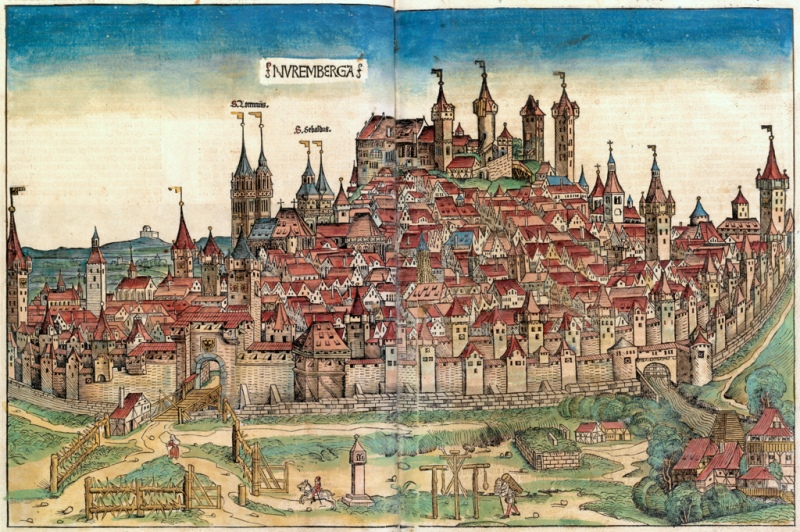
Nuremberg in 1493. Illustration from the Nuremberg Chronicle
By education, Hartman Schedel was a physician and worked in this field somewhere from 1485, and managed to get acquainted with such famous humanist scientists of this time as Konrad Celtis, Sigismund Meisterlin, Jerome Müntzer, Johann Trithemy and Dietrich Ulsenius. And so, in communication with them, he came to the idea to write ... his own historical chronicle.
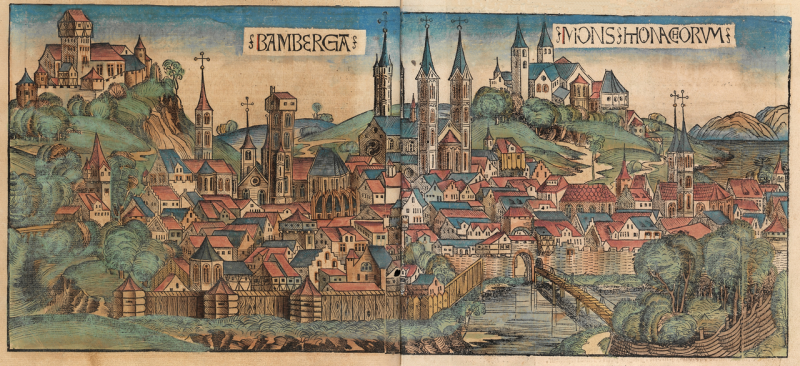
Bamberg. Illustration from the Nuremberg Chronicle
It is quite possible that this desire arose also because many books were being printed in the German lands at the same time, both on world history and directly on German history. This once again proves the fact that the main thing in a person is his intellect, and professional knowledge plays a secondary role.
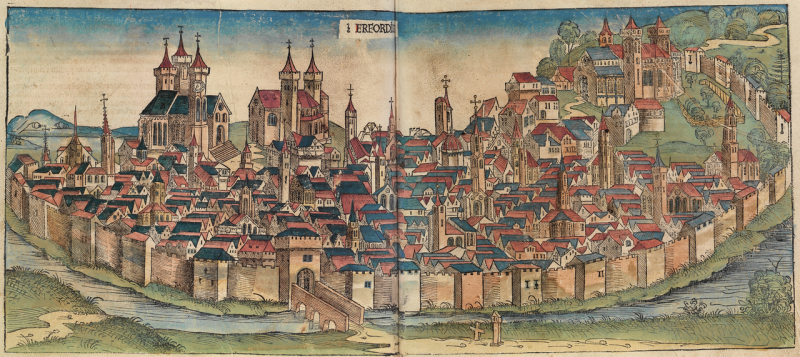
Erfurt. Illustration from the Nuremberg Chronicle
In working on the chronicle, Schedel relied on many of the works of his predecessors, simply rewriting them. Among them were the Annals of Lambert of Hersfeld (1080), and the Chronicle of Popes and Emperors by Martin Opavsky (1278), published in Turin in 1477, the Chronicle of Emperors and Kings by the chronicler from Strasbourg Jacob Twinger von Königshofen (1420), printed in the same 1477 in Augsburg, and the "World Chronicle" of the Augustinian monk Giacomo Filippo Foresti from Bergamo, which was published in Venice in 1483.
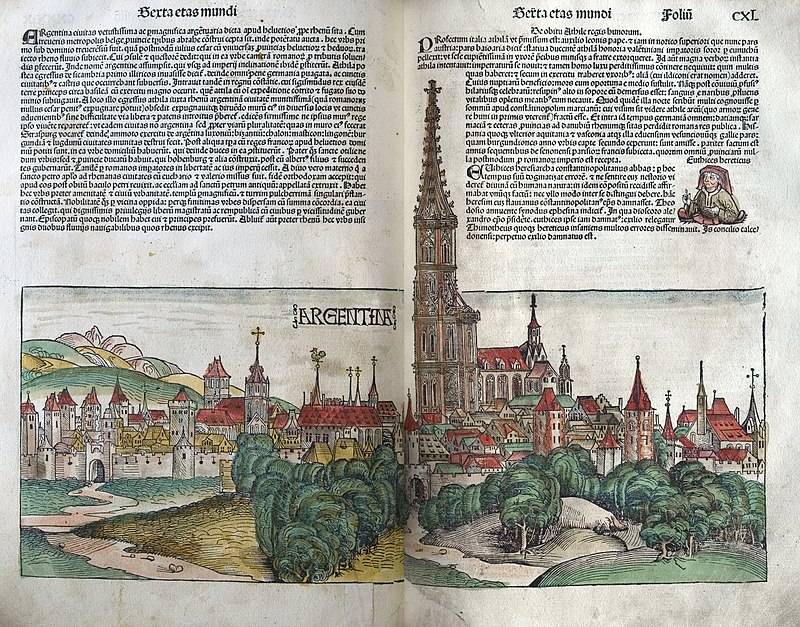
Strasbourg on the spread of the incunabula, along with the text. Illustration from the Nuremberg Chronicle
Following the medieval tradition, Schedel divided the entire world history into seven centuries, which at that time was revered as an unconditional truth. They were divided as follows:
1. The era from the creation of the world to the Flood.
2. The era from the end of the flood to the birth of Abraham.
3. The era from Abraham to David.
4. Time before the Babylonian captivity.
5. Time before Christmas.
6. The time after the birth of Christ and up to the end of the XNUMXth century (moreover, this time in Shedel's book occupied most of its volume).
7. And finally - the end of the world and the Last Judgment to take place.
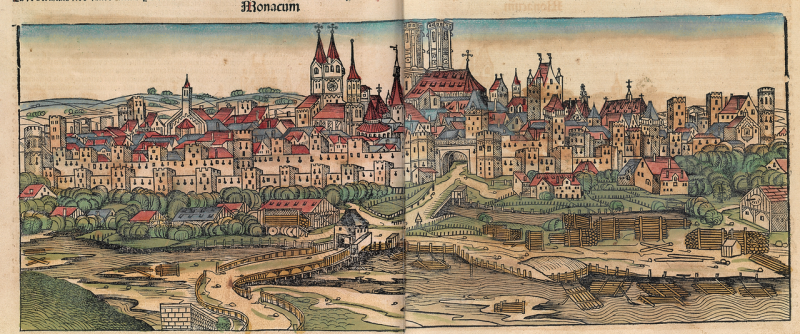
Munich. Illustration from the Nuremberg Chronicle
In addition to images of German cities, in Schedel's book one can see images of many other cities in Europe of this time. This is how, in his opinion, in 1493 it looked ...
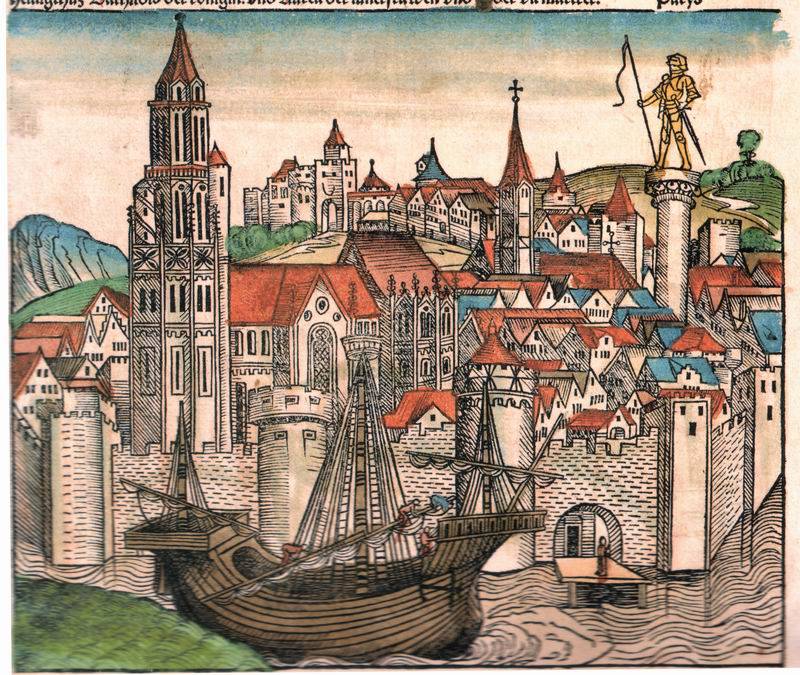
Paris. Illustration from the Nuremberg Chronicle
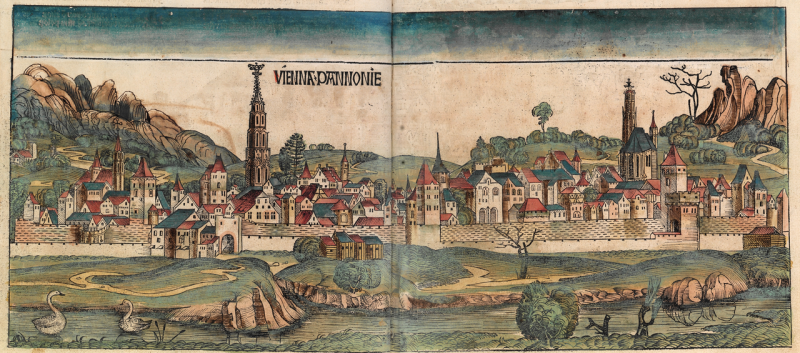
And this is Vienna. Illustration from the Nuremberg Chronicle
For the first time, Schedel's work was published on July 12, 1493 in Nuremberg in Latin and with the following title: "Liber chronicarum cum fìguris et ymaginibus ab inicio mundi" ("Book of chronicles with figures and images from the beginning of the world").
And on December 23 of the same year, its German translation appeared, which was made by Georg Alt. The approximate circulation of the "Chronicle" was from 1 to 400 copies in the Latin version, and 1-500 copies in the German version.
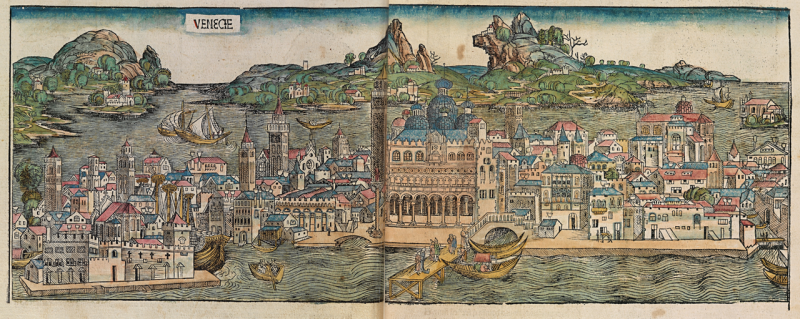
Venice. Illustration from the Nuremberg Chronicle
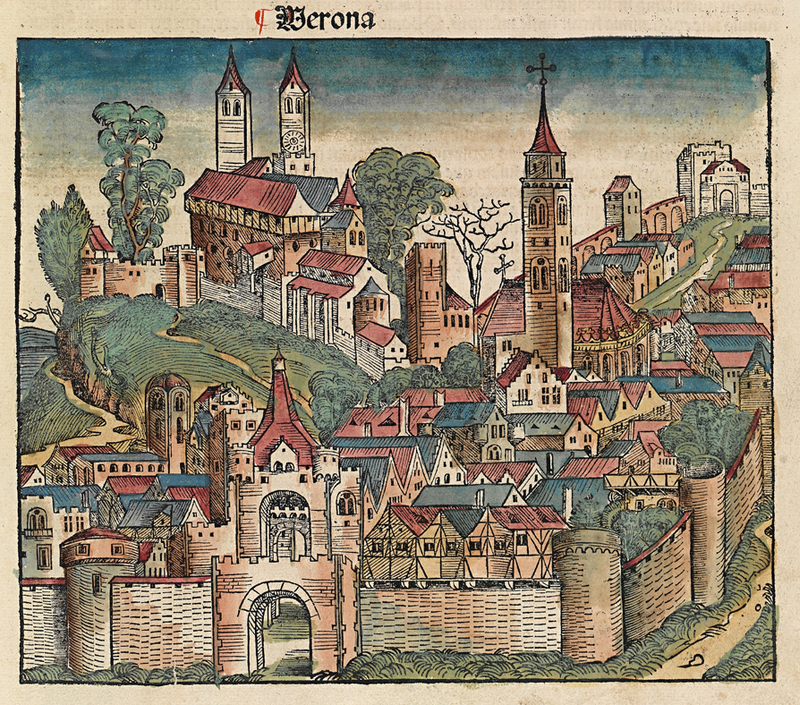
Verona

Genoa
The book was very expensive. So, in London in 1495, one copy of the chronicle was valued at 66 shillings and 8 pence. In 1496, 1497 and 1500 in Augsburg, the publication of books of a smaller format was arranged, which cost less than the Nuremberg folio, and were more accessible to the buyer.
Due to the high price for 1509, 539 copies in Latin and 60 in German were not sold. So it is not surprising that about 400 books in Latin and 300 in German have reached the beginning of the XNUMXst century. At the same time, some copies were hand-painted, and some copies were even embroidered, because large illustrations from the Chronicle were in special demand - they were copied and sold as paintings that adorned the walls of burgher houses.
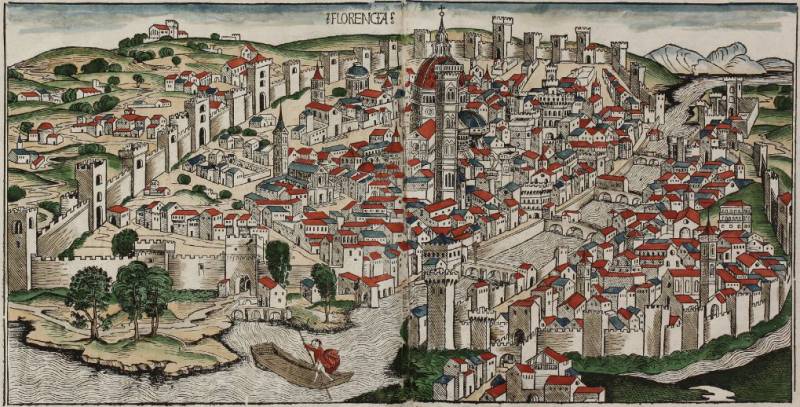
Florence. Illustration from the Nuremberg Chronicle
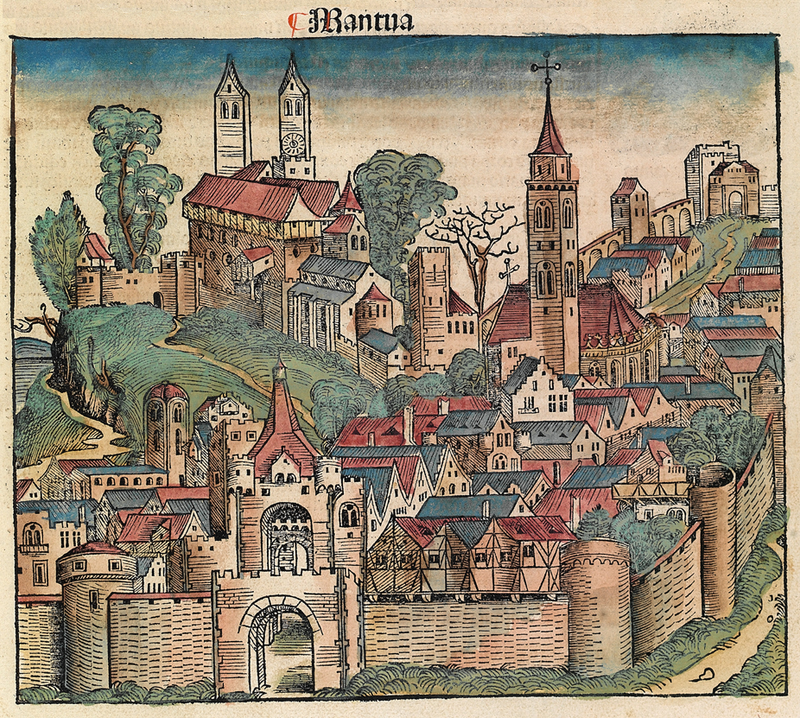
Mantova. Illustration from the Nuremberg Chronicle
It was interesting to print the Nuremberg Chronicle by a certain Anton Koberger - also known for being the godfather of Albrecht Dürer.
However, why this book of 1493 was so expensive is understandable. The fact is that for her in the workshop of the Nuremberg artists Michael Wolgemut - (teacher of Albrecht Dürer), and his son-in-law Wilhelm Pleidenwurf, as many as 645 engravings were cut out, and from them ... 1 illustrations on 809 pages were made. It turned out this way because many of them, and above all the types of cities, are duplicated in the text (sometimes up to 336 times!).
Moreover, so, the image of the city of Aquileia is very similar to the picture of Bologna, Verona is a copy of Perugia, but the most amusing is the image of Christian Marseille, which ... is replaced by the view of Nicaea with a mosque in the background on the right.
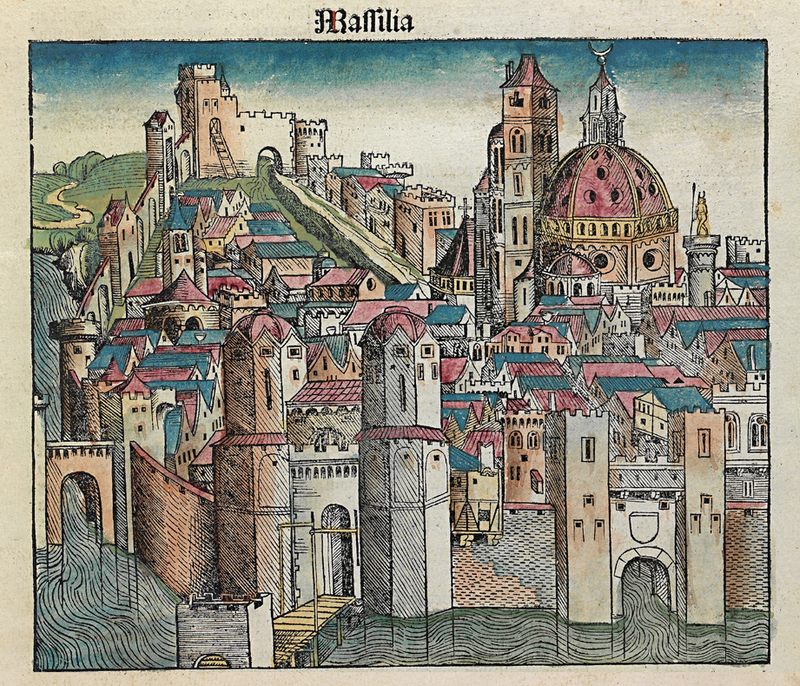
Marseilles. Illustration from the Nuremberg Chronicle
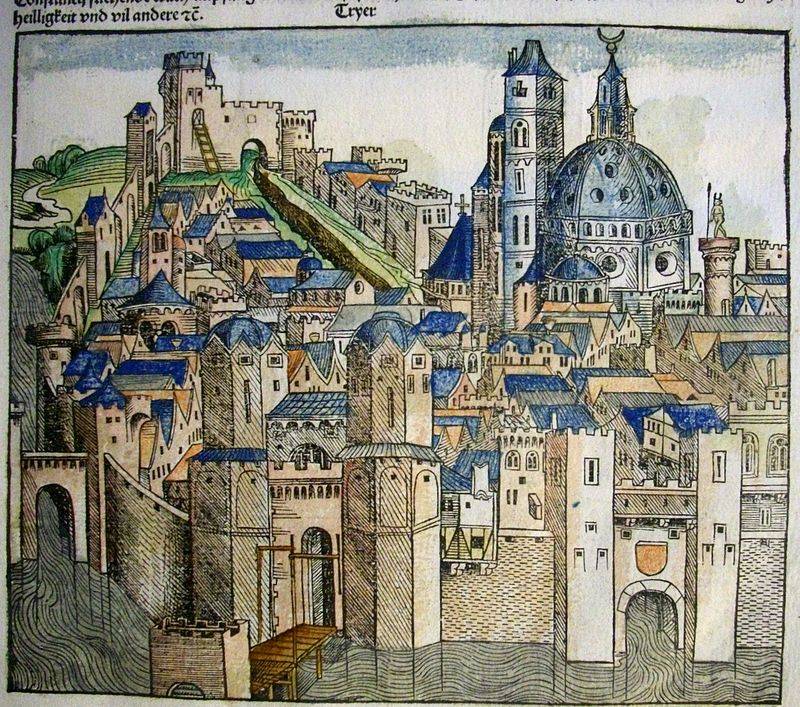
And this is Trier!
This happened, most likely, due to the fact that Schedel's cities could not get sketches with views of some cities and decided to simply replace empty spaces with arbitrary ones. Therefore, in the "Chronicle" the most reliable can be considered the views of German cities, and, well, some cities of Italy, where the chronicler obviously visited personally. But the images of the cities of the East and the ancient biblical cities are pure fantasy.
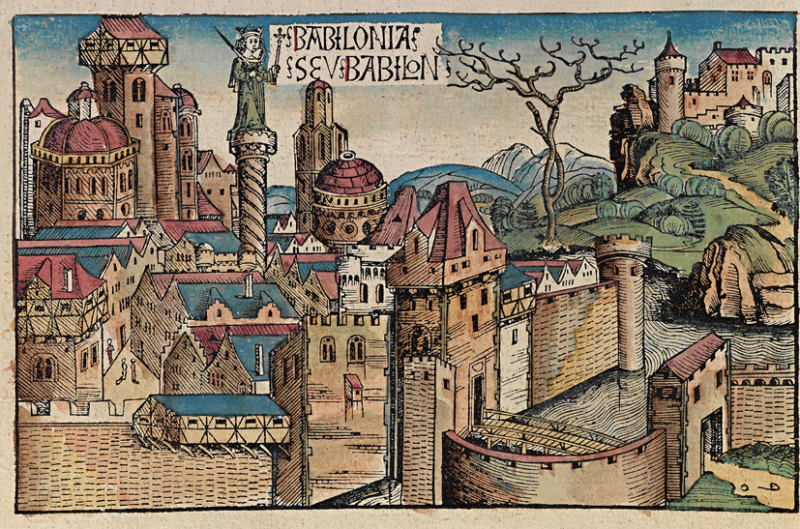
Babylon. This is how the author "saw" it. Illustration from the Nuremberg Chronicle
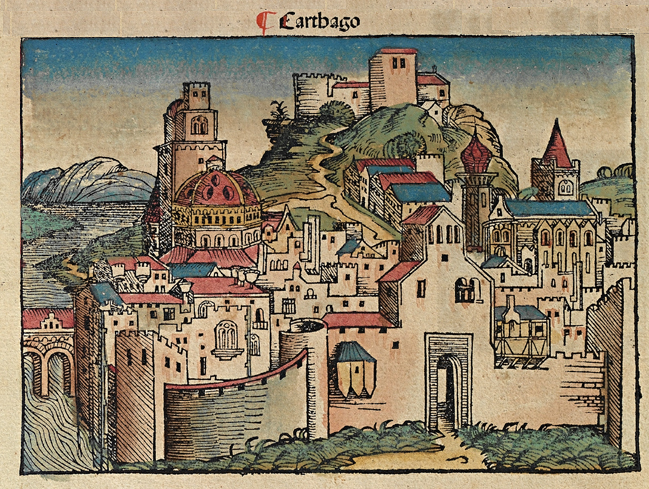
Carthage is another absolutely fantastic image. Illustration from the Nuremberg Chronicle
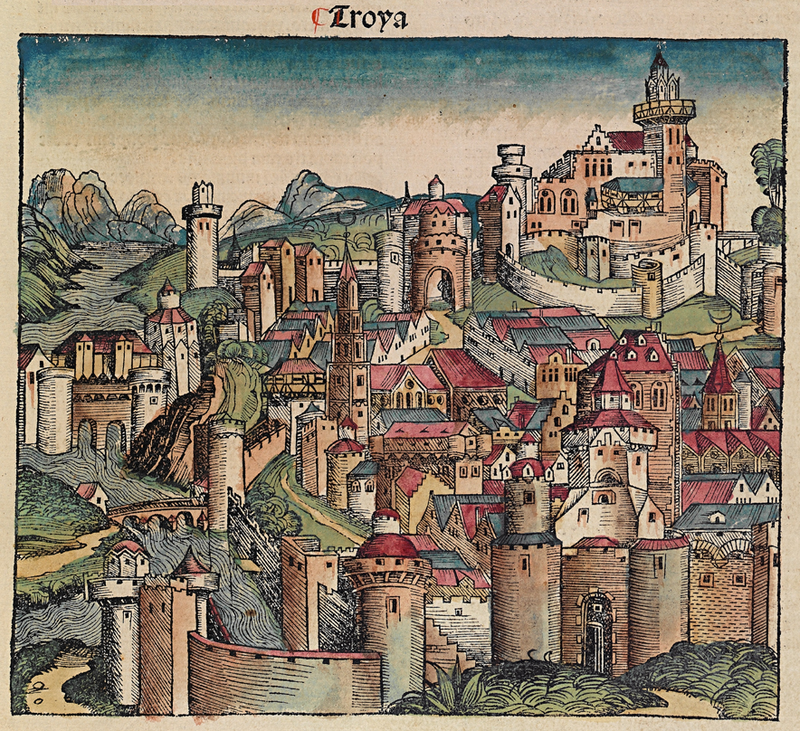
Got on the pages of the "Nuremberg Chronicle" and the legendary Troy!
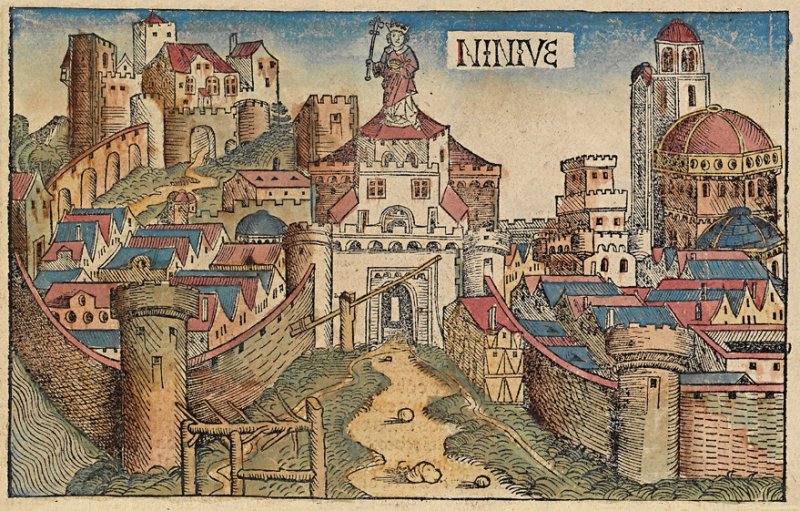
The biblical Nineveh is also present in it. Well, how without it?!
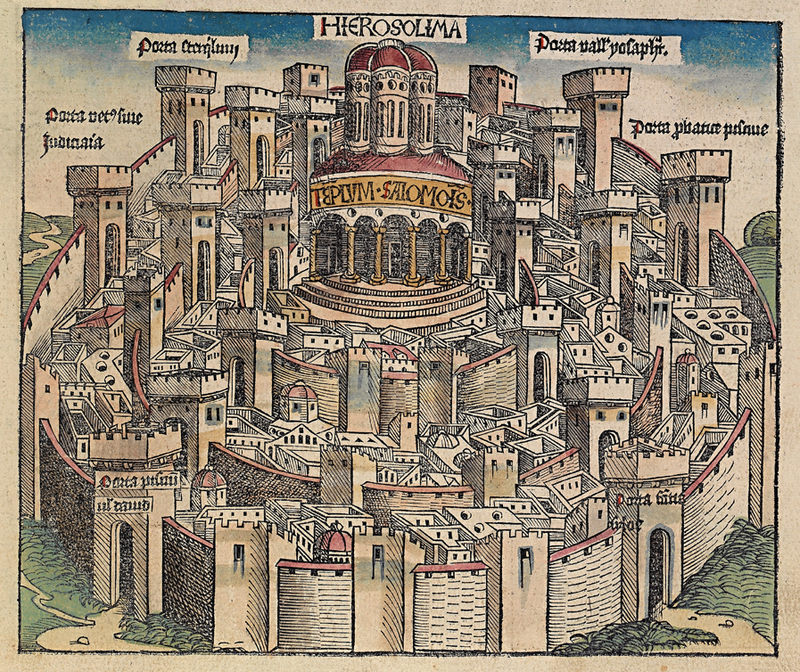
Shedel, most likely, also did not visit Jerusalem, but nevertheless he placed his image in his book!
In general, the woodcuts of this chronicle, although containing inaccuracies and distortions, are of great interest as a source of information about the architectural traditions and principles of urban development in 1493, fortifications, public buildings, and also show us such details as piers, bridges and much more. other.
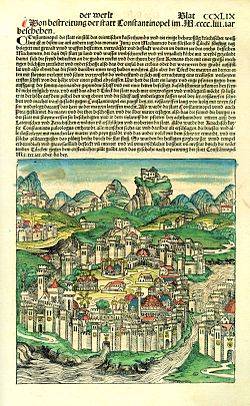
Image of Constantinople on p. 249. Hand-painted copy
In total, there are 642 original illustrations in the Nuremberg Chronicle, and there are large ones, occupying a full spread, with a format of 342 by 500 mm. There are 29 double-sided cityscapes and even two double-sided maps: one map of the world and a second map of Central and Northern Europe. America is not on the world map, since Amerigo Vespucci on his South American expedition of 1501-1502. I just haven't been able to tell yet.
There are on the European map and "Russia" (Rvssia) and "Muscovy" (Mosovia), shown separately. Moreover, the first is the territory of the possessions of Veliky Novgorod and Pskov, and the second belongs to the Grand Duchy of Moscow.
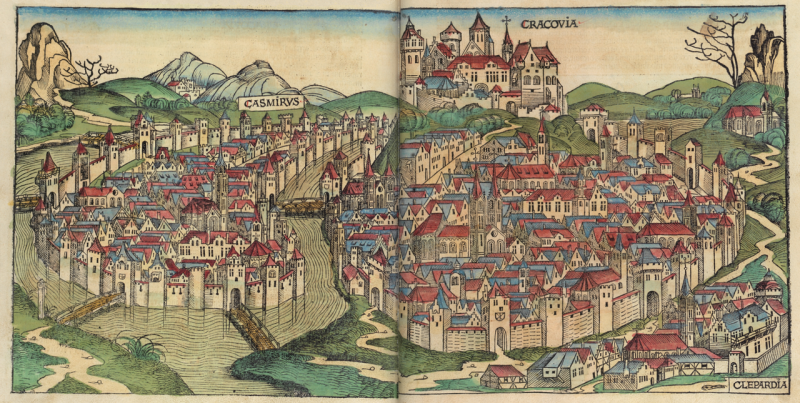
Krakow. Illustration from the Nuremberg Chronicle
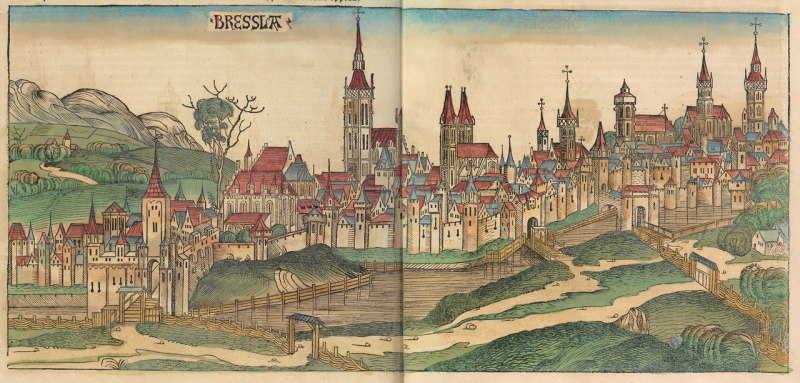
Wroclaw. True, in the "Chronicle ..." he is called in the German manner - Breslau!
The handwritten version of the chronicle itself was in the personal library of Hartmann Schedel, and in 1552, after his death, it moved to the library of Johann Jakob Fugger. In turn, in 1571, it ended up with Duke Albrecht V of Bavaria, and now this valuable document is kept in the collection of the Bavarian State Library (Munich).
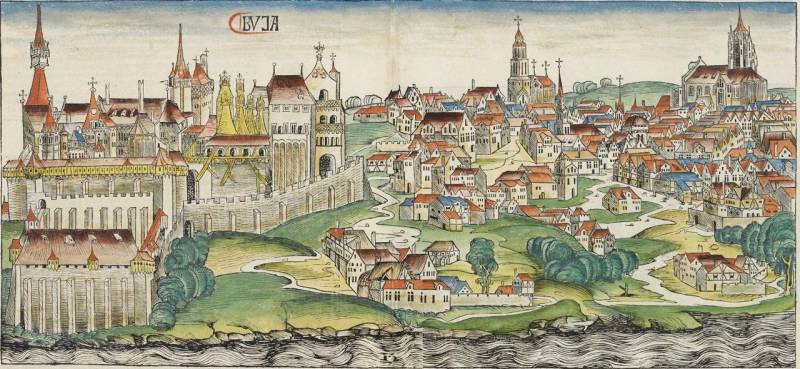
Buda in 1493
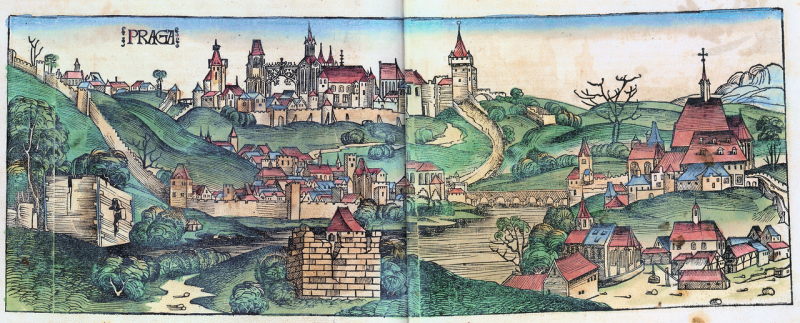
Prague
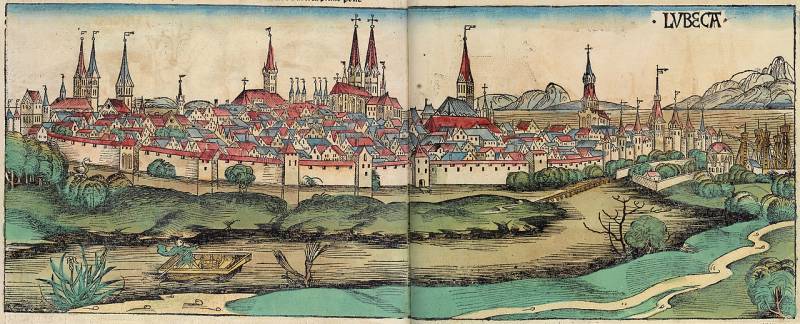
Market town of Lübeck
By the way, the first incunabula catalogs were created back in the XNUMXth century.
So, the bibliographer and historian Ludwig Hein, who compiled their catalog called "Bibliographic Repertoire" (1826-1838), managed to describe 16 thousand 299 incunabula in it! Here, it turns out, how many such books were printed at the turn of the Middle Ages and the New Age.
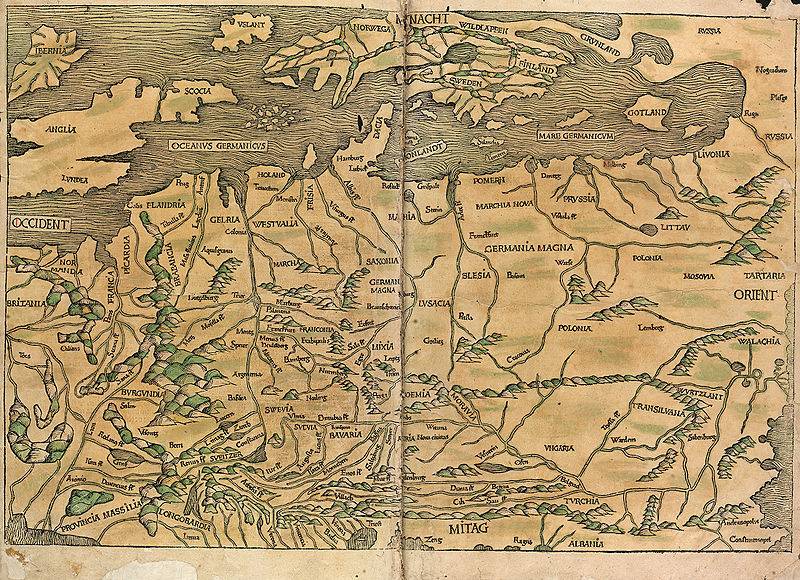
Map of Central and Northern Europe. Illustration from the Nuremberg Chronicle
Information